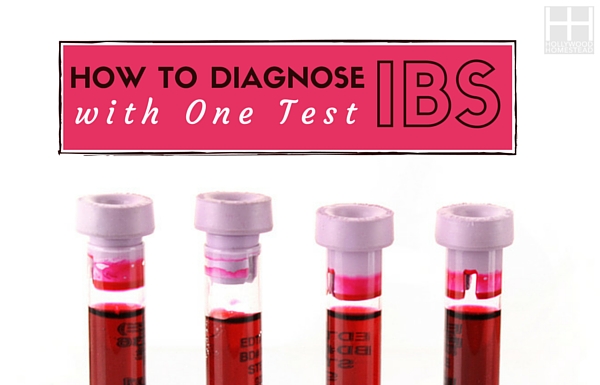
IBS is a “functional disorder,” meaning that the body looks completely normal but isn’t functioning properly. How are you supposed to diagnose something which has no visible signs? Because of this, IBS was traditionally diagnosed by excluding other possible causes. Luckily, there have been some major advancements to the field of IBS which are allowing sufferers to get more definitive answers and faster. Here we will talk about the traditional methods of diagnosing IBS, and a new test which is available.
Traditional Methods of Diagnosing IBS
The hallmark of IBS is that there are no signs that something is wrong with the body. Make no mistake – something is wrong. Doctors just can’t see it with typical lab tests or examinations. So, doctors would use an “exclusion method” to diagnose IBS.
When a patient would come to the doctor with GI symptoms, the doctor would eventually refer the patient to a gastroenterologist. The gastroenterologist would then start a series of tests to eliminate causes of the symptoms. The problem is that there are many other conditions which can cause GI symptoms and these need to be ruled out. A patient could end up feeling like a lab rat as test after test was done. As one research paper said, “there is no end to the studies that can be used to exclude other diagnoses.”
Based on articles from the 1990s to early 2000s, here are some of the tests which were commonly used to diagnose IBS on the basis of exclusion:
- Stool culture: To look for parasites or bacteria
- Fecal occult blood test: To look for hidden blood in the stools
- Blood tests: To look for anemia, infections, or illnesses caused by inflammation
- Food allergy, intolerance, and sensitivity tests: These are blood tests that look for the presence of certain antibodies
- Urine analysis and culture: To determine if there is a urinary tract infection
- Upper endoscopy: A procedure during which a flexible tube is inserted into the body through the mouth so the physician can examine the esophagus, stomach and duodenum
- Colonoscopy: A tube is inserted into the rectum and into the large intestine so the physician can look for polyps, ulcers, bleeding, or cancer; tissue may be removed for further examination
- Sigmoidoscopy: Similar to a colonoscopy, a tube is inserted into the rectum and moved into the sigmoid colon so the physician can look for abnormalities
- X-ray: The patient will drink barium, a substance which will show up on the x-ray so the physician can see the digestive system better
- Abdominal ultrasound: Allows the physician to see abnormalities in the gut
- Breath tests: Used to measure the amount of gas produced after consuming a substance such as lactose
As leading IBS expert Dr. Mark Pimentel of Cedars-Sinai in Los Angeles, CA points out, IBS patients not only had to do a lot of tests, they often had to do the same test multiple times for each doctor they consulted. (Source) Aside from being time consuming and costly, this is downright annoying. I’ve been there, so I understand how important of a breakthrough it is that there is now a single test to diagnose IBS.
Diagnosis of IBS Based on the Absence of Symptoms
Things have gotten a bit better in the past decade or so when it comes to diagnosing IBS. Instead of making patients go through multitudes of expensive, often-invasive tests, experts now try to diagnose IBS based on which symptoms are absent. These symptoms are known as “red flag symptoms” and are signs of a different condition. The doctors can then just test for these conditions instead of every single condition which can cause GI symptoms.
Some red flag symptoms include:
- Rectal bleeding
- Unintentional weight loss
- Fever
- Nausea or recurrent vomiting
- Abdominal pain which isn’t relieved by a bowel movement
- Abdominal pain at night
- Persistent diarrhea, even at night
- Family history of bowel or ovarian cancer
- Age of onset after 50
- Recent antibiotic use
Note that you can have these symptoms and still have IBS. In one large study, it was found that nearly 85% of IBS patients had at least 1 red flag symptom. However, these red flag symptoms can help inform doctors about what further tests they should run. (Source)
Diagnostic Criteria for IBS
After your doctor has run what seems like an endless number of tests to eliminate other causes of your symptoms, a diagnosis of IBS can be given – but only if it meets the diagnostic criteria. There are two diagnostic criteria which are generally used: The Rome III Diagnostic Criteria and the Manning Criteria.
Rome III Diagnostic Criteria for IBS:
According to the Rome III Diagnostic Criteria which is used by physicians to diagnose functional gastrointestinal disorders, a person has IBS when these conditions are met:
Recurrent abdominal pain or discomfort* at least 3 days per month in the last 3 months associated with 2 or more of the following:
- Improvement with defecation
- Onset associated with a change in frequency of stool
- Onset associated with a change in form (appearance) of stool
Criterion fulfilled for the last 3 months with symptom onset at least 6 months prior to diagnosis.
* “Discomfort” means an uncomfortable sensation not described as pain.
Manning Diagnostic Criteria for IBS:
With the Manning diagnosis criteria, the doctor will ask the patient a list of questions. A diagnosis of IBS is met if the patient has 3 or more of the following symptoms:
- Abdominal pain
- Relief of pain on defecation
- Increased stool frequency with pain
- Looser stools with pain
- Mucus in stools
- Feeling of incomplete evacuation
(Source)
IBSChek – The New Test for IBS
In 2015, a test for IBS was finally made available. The test was developed by gastroenterologist Dr. Mark Pimentel of Cedars-Sinai of Los Angeles, CA. It is more than 90% accurate for diagnosing diarrhea-prominent IBS. Unfortunately, at the time of publishing this (2016), the test hasn’t been confirmed for constipation-predominant IBS, but that should change soon.
The test, called IBSChek, is a simple blood test which checks for the presence of two antibodies: anti-CdtB and Anti-vinculin.
*Quick Recap: An antibody is a protein that the body produces when it detects a harmful substance called an antigen (such as a bacterium, virus, etc.). Antibodies are like locks and keys in that one antibody only fits one antigen.
Anti-CdtB is an antibody which is made in response to Cytolethal distending toxin (Cdt) type B. These toxins are produced by certain bacteria, such as E. coli, Salmonella, and Shigella (many other bacteria also produce the toxin, but these are the ones we are most familiar with). Basically, if you get infected by these bacteria, your body produces anti-CdtB to fight the toxins.
Antibodies are normally a good thing, but sometimes our immune system gets a bit confused. It can mistake healthy cells as the antigens they are trying to fight off. In the case of anti-CdtB, the antibody can mistakenly start attacking vinculin.
Vinculin are proteins which line the intestine. They connect cells within the gut, including the Interstitial Cells of Cajal – which are the cells which act as a pacemaker to control your gut’s movements. These movements are called peristalisis. As we talk in this post about what causes IBS symptoms, your gut movements are very important. If your gut is contracting too quickly, then not enough water will be absorbed from waste and you will have diarrhea. If your gut is contracting too slowly, then too much water will be absorbed and you will get hard stools. If your gut is contracting wildly (as is common with IBS patients), the spasms can be incredibly painful.
In Dr. Pimentel’s studies, he found that patients with IBS had anti-CdtB and anti-vinculin antibodies. Just as importantly, these antibodies were not found in healthy subjects or patients with IBD. If your blood test shows you have these antibodies, then you can be diagnosed with IBS.
A Diagnosis is Just a Starting Point
By definition, IBS is just a group of symptoms which cannot be explained. Getting a diagnosis of IBS does not explain what caused your IBS. More importantly, an IBS diagnosis doesn’t help you treat the condition.
If you have a diagnosis of IBS, consider it just a starting point. You will have to do further research and tests to figure out what the real cause of your IBS is. Make no mistake: just because your doctor hasn’t figured out a cause of your IBS, it doesn’t mean that there is no cause. Gastrointestinal disorders are complex because there can be many different issues at play such as food sensitivities, microbial issues, and nervous system issues.
Do you have IBS? Download our free guide 7 Things You Wish Your Doctor Told You About IBS.

Latest posts by Sylvie McCracken (see all)
- Treating H. Pylori (Part 3): What H. Pylori Does to the Body - August 8, 2022
- Treating H. Pylori (Part 2): How H. Pylori is Contracted - August 3, 2022
- Understanding Beef Labels: Organic, Pastured, Grass-Fed & Grain-Finished - July 25, 2022
